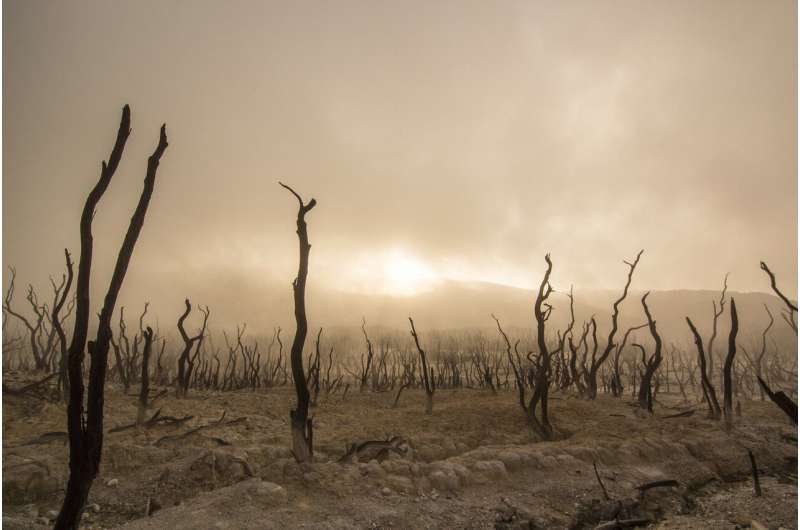Credit: CC0 Public Domain
The United Nations' Intergovernmental Panel on Climate Change (IPCC) has released the first report of its sixth assessment—known as AR6—which focused on the physical science, the physics and chemistry of the changing climate.
The report, approved by 195 governments around the world, drew its conclusions from more than 14,000 scientific studies. It pointed to "unequivocal" human influence that undoubtedly caused warmer atmosphere, oceans, and land, leading to "widespread and rapid changes in the atmosphere, ocean, cryosphere, and biosphere."
Though such a link has been known for years, this is the first time an IPCC account has stated it with such force, says Michael Weisberg, chair of Penn's Department of Philosophy and a contributor to the second IPCC working group. "It's the strongest language they've ever used," he says. "Another way to put it is human influence on climate is an established fact. There's really no discussion anymore."
That bluntness is crucial and, in some ways, gratifying for those who have been entrenched in the climate world for a long time, says Mark Alan Hughes, director of Penn's Kleinman Center for Energy Policy. "The headline here is urgency," he says. "The science is just overwhelming and not just the climate science and the technology science but also the political science."
In 2022, working groups will put out two additional reports. One expected in February, on which Weisberg is a co-author, will center on how climate change is affecting humans and ecosystems. The final, slated to publish in March, will offer information about mitigation strategies and policymaking.
Weisberg and Hughes offer four things to know about AR6.
1. The assessment increases precision and lowers uncertainty about the effect humans are having on the climate.
That's partially because, in the time since the most recent previous IPCC report, in 2014, climate models have improved, both in terms of how precisely they can measure historical climate changes and how well they can project the future, Weisberg says. "It's now easier to say things with greater degrees of certainty."
That makes it easier for decision makers at all levels to employ these data, says Hughes. "The global models have been too complex to use to make actionable decisions. The IPCC has worked very hard to make the information more usable."
2. It's no longer likely we'll be able to limit temperature increases to just 1.5 degrees Celsius.
Hughes says that rather than thinking in binary terms—1.5 versus 2 degrees, for example—at this point it's more important to think along a spectrum. "Whether we try for 2 or 3 degrees really misses the point at this stage of the endgame," he says. "Thinking along a spectrum means that the more we limit warming, wherever we are on the temperature scale, the more we limit damage. Full stop."
3. Equity is an important part of climate conversations today.
"Devastating impacts are already underway in many parts of the world," Hughes says. "There's a moral crisis created by climate impacts in parts of Africa and Asia. And there's a moral crisis building even in some parts of the United States, along our coasts, on our farms, in our unairconditioned inner cities."
4. Despite a grim prognosis, there's still hope.
To make a difference will require starting with short-term actions, such as reducing methane emissions, now. Because methane's warming effect is greater in the first two decades after emission than that of carbon dioxide, cutting this gas can "buy us time," says Hughes.
In the meantime, it will be crucial to continue working toward net zero. In other words, "we must not simply end our emissions but actually figure out technologies and policies that will allow us to remove emissions from the atmosphere," he says.
"The bottom line," says Weisberg, "is that we have agency here. If we do what we need to do, the worst will be averted. It's a huge undertaking, but we're not past the point of no return yet."
Provided by University of Pennsylvania
























